The 2019 AVPN conference in Singapore put its cards firmly on the table from the start.
The focus would be on big themes: education, gender equality, hunger and malnutrition, and climate change – most of all on climate change. From the first session, speaker after speaker reminded us that we only have 15 years in which to reduce greenhouse gas emissions before the effects of climate change become irreversible.
And Asia is at the sharp end. The fight to combat climate change will be won and lost there, said Maria Athena Ballesteros, of the Growald Family Fund. Amy Khor, Singapore’s Minister for Environment and Water Resources, noted that the country had declared 2018 an official year of climate action. Rising sea levels and rising temperatures (the island state is heating up twice as quickly as the rest of the world, she said) posed a threat to its future. It is investing in solar energy and expanding its public transport network so that eight out of every 10 Singaporeans will be within walking distance of a railway station. But, she said, the government could not do it alone. It needed the support of both business and civil society. Fung Wing-ah of BRACE Hong Kong explained that the investment company had now aligned its entire portfolio on climate change mitigation and, like Minister Khor, also stressed that the efforts of one sector alone would not be enough. Enter another key conference theme: all of the issues under discussion will require partnerships that involve not just money but joint action.
Later in the conference, Christine Heenan of the Rockefeller Foundation also touched on both of these in a keynote speech. The challenge is not to find solutions to climate change, she argued. These already exist. The challenge is to bring them to scale. That’s where partnerships come into play, partnerships founded on mutual respect, complementary strengths and synergy.
Words to deeds
The conference also marked the launch of AVPN’s climate action platform. Naina Batra, AVPN chair and CEO, signalled the desire for a deeper and more active commitment which was evident all through proceedings. The platform, she said, will be more than a piece of symbolism, a board which all participants were invited to sign as an earnest of their solidarity, it will attempt to connect all the sectors, providing investment opportunities and knowledge. But, she added, to be successful, ‘it needs your engagement’. She spoke of the power of networks, which not only bring people together (her welcoming remarks were addressed to 1348 delegates from 48 countries, itself a token of the formidable convening power of AVPN), they bring campaigns together and they bridge divides. But convening is not enough. We need to catalyse and enable action. We need to cooperate, to act urgently, while not losing patience and we need to make change irresistible.
 Eileen Rockefeller Growald of the Growald Family Fund (GFF) struck a positive note: ‘we can and are finding climate solutions together,’ she insisted. GFF is seeding social enterprises and innovators and collaborating with them and with funders to further climate solutions. The obstacles, however, remain formidable. Technology needs to be brought to bear more quickly, said Dan Choon of Cycle Group. Technology transfer currently takes too long – traditionally, 45-60 years to get to 20 per cent market penetration. We need to move much faster. In the same session, Britt Groosman of the Environmental Defense Fund spoke of the difficulties of moving finance towards measures to combat climate change. The next-best thing, she said, is to induce sectors who produce large-scale emissions, like aviation and shipping to consider carbon pricing, indeed there are signs that they are doing so. Geoffrey Seeto of New Forests Asia endorsed this from his own experience. A number of airlines, one of which is Indigo in India, have agreed to offset their carbon emissions from 2020 and they see funding forestry from the proceeds of pricing carbon as part of doing that. However, while funding carbon sequestration at scale is a proven means of climate change mitigation, only three per cent of climate finance currently goes into it.
Eileen Rockefeller Growald of the Growald Family Fund (GFF) struck a positive note: ‘we can and are finding climate solutions together,’ she insisted. GFF is seeding social enterprises and innovators and collaborating with them and with funders to further climate solutions. The obstacles, however, remain formidable. Technology needs to be brought to bear more quickly, said Dan Choon of Cycle Group. Technology transfer currently takes too long – traditionally, 45-60 years to get to 20 per cent market penetration. We need to move much faster. In the same session, Britt Groosman of the Environmental Defense Fund spoke of the difficulties of moving finance towards measures to combat climate change. The next-best thing, she said, is to induce sectors who produce large-scale emissions, like aviation and shipping to consider carbon pricing, indeed there are signs that they are doing so. Geoffrey Seeto of New Forests Asia endorsed this from his own experience. A number of airlines, one of which is Indigo in India, have agreed to offset their carbon emissions from 2020 and they see funding forestry from the proceeds of pricing carbon as part of doing that. However, while funding carbon sequestration at scale is a proven means of climate change mitigation, only three per cent of climate finance currently goes into it.
Ideas for attracting finance for climate solutions brainstormed among all participants in the session ranged from training grassroots installers of solar panels, debt relief for governments funding clean energy and banks cooperating to offer concessionary ESG bonds.
Breaking boundaries
In addition to what we need to do, there is the further question of where we will get the resources to do it. AVPN COO, Kevin Teo reminded the audience that, if the SDGs are to be achieved, an estimated $2.5 trillion per year will be needed (he was not the only one to quote this figure over the coming days). Large investors, therefore, will need to make large investments with proportionally big impact and the conference title, Breaking Boundaries, signalled the need to attract those investors – public and private – into the social and environmental sphere. How to do this formed another strand linking conference proceedings. For its part. AVPN has been actively working with investors in both those sectors, trying to link private impact or would-be impact investors with social businesses on the one side and continuing to press forward with the APx policy forum on the other.
Why don’t donors, especially corporate donors, let communities define their own needs rather than simply giving them what they, the donors, have?
In his quest to ‘privatise failure and socialise success’ James Chen called on philanthropists to exercise their much-touted capacity for risk. ‘If you are serious about impact,’ he said, ‘high risk is where the real returns occur.’ He offered Gates Foundation’s work with malaria as a model of catalytic philanthropy and an example of how ‘perseverance and domain expertise’ could have great impact. His own organisation, Clearly, which aims to bring low-cost vision correction to poor communities around the world, had overcome initial objections from funders, among them the World Bank, that there was no evidence for the effect of vision correction programmes and no model of the intervention in low-income countries, by providing both in the form of Vision for a Nation, a programme run jointly with the government of Rwanda, and a major study in the Lancet. Both, he said, had helped to de-risk investment in sight correction.
Suitability and sustainability
How can you build a philanthropic culture when the word ‘philanthropy’ is barely understood, or has connotations of charity and patronage as it does in both Myanmar and Indonesia? The questions were asked in a breakout session on unlocking local philanthropic funding in South-East Asia. In a place like Myanmar where investment and philanthropy are both finding their feet, people need to build good businesses, not just give away money from successful ones, argued Aung Htun of Myanmar Investments. Ruel Maranan of the Ayala Foundation (Philippines) agreed, noting that the younger generation is more responsive to the idea of social impact, so change is on the way. A more direct means of encouraging giving, believes Victor Hartono of the Djarum Foundation in Indonesia, is for governments to offer tax incentives, an issue to which Veronica Colondam of YCAB Foundation in Indonesia would return later in the conference. The restrictive environment for philanthropy in that country has meant, among other things, that YCAB took longer to find a suitable method and form for its operation, since there are no endowments.
Inevitably, there was much talk of sustainability over the three and half days of the conference. It was Ruel Maranan who matched it with the notion of suitability. Why don’t donors, especially corporate donors, let communities define their own needs rather than simply giving them what they, the donors, have? It makes for greater engagement: ‘they [communities] are already involved and open,’ and if all stakeholders are involved, all of them win, he argued. The theme of suitability also arose in discussion of the question of impact. Victor Hartono urged donors to think ‘what’s appropriate for you’ as well as for beneficiaries. Djarum, which has pioneered a form of vocational school that the government is now copying, plants trees as part of its climate change mitigation efforts. It’s within reach whereas investment in a more sophisticated carbon capture technology may not be.
The themes of collaboration and ‘feet on the ground’ were also in evidence in the session. Hartono spoke of the importance of ‘staying local. You are there, your people are there.’
The malnourished and the hungry
81.7 million children in Asia suffer from stunting as a result of malnutrition, said Ertharin Cousin, formerly of the World Food Programme and now a board member of the Power of Nutrition. Opening a discussion on investing for better nutrition, she announced that the global cost of malnutrition is now a staggering $3.5 trillion per year, leaving aside the cost in misery and suffering. We need to reform the global food system, she said, and we can’t do it without private sector funding and involvement. To get it, we need agreed metrics defined according to business principles. Another way, suggested both Martin Short, CEO of the Power of Nutrition and Rebecca Boustead of Kellogg, might be appealing to investors’ bottom line, pointing out the economic effects of the problem. Ertharin Cousin also sees nothing wrong in companies profiting from social investments, so long as they work and social benefits accrue.
If self-interest was a way into the pockets of the private sector, how could we get governments to invest more in their malnourished communities?
For Rebecca Boustead, there are two questions. How can we make food which is both nutritious and appealing, and how can we get it to small village markets? She spoke of partnerships which Kellogg had with the Breakfast Revolution and with the Sesame Workshop. In the former case, food was getting to the hard-to-reach and in the second, the message of the importance of nutrition was being conveyed.
If self-interest was a way into the pockets of the private sector, how could we get governments to invest more in their malnourished communities? ‘Engage, engage, engage – with hard data’, was Ertharin Cousin’s recipe. Give them practical solutions that help them save money, suggested Rebecca Boustead, a prescription not so far removed from that advocated by participants for use with the private sector.
Impact investing: time, transparency and demonstration
These three things are needed to ramp up impact investment across all sectors. While it might be true to say, as Richard Ditzio of the Milken Institute, who chaired the subsequent panel discussion, did, that there is spare capital and it wants to invest in sustainability, there are still obstacles. Didier von Daeniken, also of Standard Chartered wondered how banks and financial institutions could help clients translate words like sustainability, impact investing and philanthropy into language they could understand. Measurement is still a sticking point, he noted, as is the lack of information about investment opportunities. Angela Bai of China Alliance of Social Value Investment (CASVI) and Roy Swan of the Ford Foundation both endorsed this in a later session. Bai added a third challenge: the difficulty of making investments scalable.
Doug Lee of D3Jubilee Partners, an impact venture fund in South Korea noted a Catch-22 situation arising. First-time funds have the lowest rate of return, so investors shy away, but if funds can’t attract investors, how are they to succeed? Foundations have the added challenge of persuading the trustees. Roy Swan related that it took two years to induce Ford’s trustees to release eight per cent of the foundation’s endowment to devote to impact investing! Frank Niederlander of BMW Stiftung Herbert Quandt agreed that patience is needed and caution. The pioneer investors, he said, need to be apostles. They can’t afford to fail.
Many banks in Asia (local and international) still did not have a clear grasp of sustainable investment.
All that said, there is progress. Rashesh Shah of Edelweiss (India) noted that individual investors are asking more of their banks. Banks themselves, represented by Jose Vinals of Standard Chartered, can make money and help save the world at the same time, he said. From doing no harm, Standard Chartered is now moving towards being a force for good. He called for benchmarks on green bonds, guidelines for company disclosure and greater sustainability built into the financial system. This remark itself is progress, says Annie Chen (RS Group, Hong Kong). She noted that she could not have imagined hearing a bank saying it should do good 10 years ago. The Sustainable Finance Initiative in Hong Kong which RS launched a year earlier is helping to spread the word on impact investing among family offices there and to foment a robust impact investment community. She noted, however, that many banks in Asia (local and international) still did not have a clear grasp of sustainable investment. Didier von Daeniken agreed. Communication is their biggest problem. Standard Chartered’s research among its Asian clients, however, suggests that 20 per cent of respondents are now allocating some investment towards the SDGs and that there is greater understanding of impact investing.
There are other grounds for optimism. Both Annie Chen and Eliza Foo of Temasek International (Singapore) see hope in the evident desire for change, especially among the young, and in the pace of change. And there is a lot at stake. If impact investing really takes hold, said Amit Bouri of the Global Impact Investing Network (GIIN), we might change the way the financial markets work.
Measurement
The challenge the conference returned to most often, though, was measurement of impact. Eric Rice of Wellington Management Singapore noted little progress on this, yet impact is ‘what distinguishes this segment. We won’t get mainstream capital if we don’t figure it out, he warned. Moreover, new generation donors are particularly keen on impact, said Giovanni Zenteno from LGT Venture Philanthropy. On the plus side, if you can show it, money is more likely to come your way.
Adam McCarty of Mekong Economics, whom I had marked down as a hard-shell pragmatist from previous sessions, has a slightly different take. We do impact measurement, he said, because that’s the deal of impact investing. If you want free or cheap money, you have to answer for the good you’re doing. Most impact measurement at the moment is rudimentary, he suggested and more sophisticated means won’t emerge unless donors demand it. Generally, panellists agreed, impact measurement is donor-driven, though Ronald Abraham of iDinsight in India feels that both sides need to take it seriously. He sees three main challenges: first, impact evaluation is slow. It can take between one and three years, by which time the programme has changed. Second, the quality of the data is generally poor. Third, it’s expensive, though it can repay expenditure by the NPO, even if it doesn’t lead to more funding. Idinsight had worked with Educate Girls on a machine-learning project which has enabled them to work with more children on their budget, in spite of the initial cost of the exercise.
Collaborative philanthropy
If you ask donors whether they practise collaboration, they all say ‘yes’, said Nadia Roumani of the Institute of Design at Stanford, though a show of hands in a breakout session on the topic revealed that only half a dozen or so out of an audience of 50-60 are actually pooling resources. Why so few when it’s clear that more can be accomplished by working with others? The chief reason given in the session was loss of control. Smaller contributors fear being swamped by larger ones, moreover, it is difficult to reconcile giving unrestricted grants from the pool with the particular wishes of individual donors? Co-Impact tries to circumvent this by allowing smaller contributors to vote on where they want their funds to go within the framework of the programme, said Anne-Marie Harling of Co-Impact. Participants also need a certain amount of humility. Erin Hulme of the Gates Foundation said that in the collaboration on polio involving Gates, WHO and UNICEF, the foundation had been willing to ‘go where the expertise lies’ and did not need to lead. Boon Heong Ng of Temasek International agreed. Temasek was originally the sole donor of Project Silver Screen in Singapore which works to combat hearing deficiencies among the elderly. Silver Screen now involves other companies, the Ministry of Health and people’s associations, all of whom bring different kinds of expertise.
In spite of obvious advantages, collaboration remains difficult, especially among institutions.
It’s not just big funders who can benefit from collaboration. Ludwig Forrest of the King Baudouin Foundation (KBF) explained the concept of umbrella foundations. These allow modest donors to pool resources under the aegis of a larger entity like KBF and to give to causes they have in common. It’s a way of democratising philanthropy, he said. KBF currently has 750 smaller foundations sheltering under its umbrella.
In spite of obvious advantages, collaboration remains difficult, especially among institutions. Setting up collaborations requires giving a lot of thought to the structure, which needs to be clear, yet flexible enough to adapt, said Nadia Roumani.
What is effective philanthropy?
For those – and there were many – who had been urging the non-profit to be more like the for-profit sector, Larry Kramer of the Hewlett Foundation, had some words of caution. ‘It’s a big mistake,’ he said. ‘We all want to be efficient but that’s not business, it’s good organisational thinking.’ Non- and for-profit organisations have different methods, different areas of work and, most important, different means of measuring. Business has one simple metric Philanthropy can’t have, but that doesn’t mean it can’t be effective. There are three elements to effective philanthropy: have a goal, have a story about how to achieve it and have a way to measure progress. The criterion for the last, he argued, is ‘reasonableness under the circumstances.’ Don’t lie to yourselves and don’t force it. Accept that there will be some fuzziness. He urged the audience to think in terms of learning, not of success or failure.
Prizes
If the ethos of the non-profit sector is – or ought to be – collaboration, the MacArthur Foundation has found competition can sometimes be valuable. Its 100 and Change prize offers $100 million for any solution to any problem, explained Celia Conrad. The first winner in 2017 was the Sesame Workshop. In addition to sparking innovation, the applicants, even the unsuccessful ones, can generate valuable ideas which could be shared. For the winners themselves, the prize money can help bring in more funds, as has happened for Sesame Workshop. Lisa George from the MacQuarie Group Foundation in Australia had launched a similar, though more modest ($10 million) prize to mark its 50th anniversary. Like MacArthur, they had been surprised by the quality and breadth of the applications. The shortlist of finalists had included initiatives as diverse as the Ocean Cleanup, Human Rights Watch and Girl Effect.
It’s a high-stakes game though, cautioned Safeena Hussain of Educate Girls, a successful applicant to the Audacious Project run by TED for its efforts to bring 1.5 million girls back into the school system in India. While the application process can help NGOs think through what they do, it is also time-consuming. ‘If we hadn’t won, we would have struggled,’ she said, ‘because we had invested so much in the process for over a year.’ She urged funders to think of the cost of the acquisition of their money.
Old power, new power
The nature of power is changing and donors and investors need to adjust to deal with the shift, says Jeremy Heimans of Purpose. Old power is formal, specialist, non-participatory. It’s what he termed power as currency. Harvey Weinstein is old power (an unsympathetic example in case you were wondering which side you ought to be on). New power is transparent, informal, fluid, participatory, or power as current, as he put it. Examples include #MeToo, Occupy and Airbnb. The future will be a battle for mobilisation, he predicted and the problem philanthropists need to solve is how to work with new power.
Workshops
The final day of the conference provided the chance to work in more detail in a series of workshop during the morning and afternoon. As with the breakout and plenary sessions, these covered a range of topics, among them, solutions journalism and the impact of storytelling, strategies to improve the effectiveness of philanthropic practice, using finance as a tool to address gender-based violence, and identifying impact investment opportunities in Asia. Both of the ones I attended proved interesting and involving. In one, Eric Nee, editor of Stanford Social Innovation Review (SSIR) and Fan Li, his counterpart on the Chinese version of SSIR, introduced the idea of solutions journalism. Rather than providing exposés of problems, as traditional journalism tended to do, Nee explained, solutions journalism – well, the clue is in the name – focuses on the response to the problem, goes into detail on how the response works and provides lessons and frameworks, not just inspiration. He and Fan Li also outlined ways on presenting ideas so that they would stick with the audience, telling stories that were credible, concrete, simple and arresting.
‘Make expectations clear at the outset, listen more than you talk and be clear and consistent in your dealings with the grantee.’
The workshop on the effectiveness of philanthropy, presented by Lindsay Louie of the Hewlett Foundation, looked at four elements of Hewlett’s practice, values, strategy, measurement and grant practice. Louie underlined the importance that Hewlett attaches to evaluation, spending two per cent of its budget on the issue. Moreover, Hewlett periodically evaluates its own evaluations. Evaluations need to observe three criteria, she suggested: utility, acceptability and suitability. In other words, assessment needs to fit the intervention in question, it has to make respondents feel part of the project and it needs to be tied to implementation. In terms of how to be a good grantmaker, she offered the following: be responsive, show curiosity about the grantee organisation, not just the programme, make expectations clear at the outset, listen more than you talk and be clear and consistent in your dealings with the grantee.
Consuming the conference
As usual, AVPN provided an array of sessions and topics that were almost overwhelming in number and variety. When you are catering for as large and diverse an audience as the conference attracts, you have to put on a big menu.
It was thoughtfully set out, though. The topics, though varied, never strayed far from the major themes of the conference. It seemed to me, too, that this year, it was better paced, with fewer, but longer sessions which allowed greater discussion and there was an urgency and a conviction about proceedings which was striking. There were also more – and welcome – changes of pace, with a greater number of participatory sessions. The quality of the sessions, as always, depends on the presenters. Everyone will have their own highlights, according to taste. For me, James Chen’s and Larry Kramer’s keynotes, the workshops, and the climate finance and the listening to the voices of grantees breakout sessions stood out.
‘If you are giving money away, you’re a philanthropist. If you’re expecting stock market returns, you’re not a philanthropist.’
One panellist remarked that you could put all of the participants into three boxes – those who want money, those who have it to give and those who mediate in various capacities between them. He may be right, but those are very big boxes, accommodating many different types and sizes of organisation – funders, non-profits, investment managers of different stripes, researchers, CSR officers and consultants and local and regional social enterprises who were pitching to the ‘deal share’platform all added to the mix. A trademark of the AVPN conference remains its energy and its curiosity. There’s a willingness to meet and to strike up conversations that isn’t always apparent at other gatherings. No doubt participants bring this with them, but AVPN deserves some credit for providing the setting and the atmosphere to allow them to do so.
One thing more: A number of speakers appealed to an economic, rather than a normative, rationale for addressing the issues discussed which – for me – felt jarring. True, there were a lot of people in the room accustomed to thinking in financial terms and each mode of life has its own conceptual frame and its own vocabulary. Maybe, too, they thought the message of the social sector would be heard more readily by mainstream capital if it were couched in terms it could readily grasp. At all events, it felt at times like listeners were being urged to take on social issues for the sake of global GDP, rather than for reasons more essentially human.
Clearly, it will take more than two or three days to break the boundaries between the social and mainstream investment worlds. Even those already on the social and impact investment bus – so to speak – weren’t always clear about where to sit, who to sit with, or even what route the bus should take to its destination. One participant I spoke to had a simple rule of thumb: ‘If you are giving money away, you’re a philanthropist. If you’re expecting stock market returns, you’re not a philanthropist.’ But if participants are sometimes hazy about their own roles and nomenclature and the difficulties of bringing others who are currently outside the ambit of social investment (however defined) remain unresolved, one of the things the conference made clear is that working in common takes time and a lot of conversations. You have to start somewhere. AVPN’s conference was a firm and necessary first step.
Andrew Milner is associate editor of Alliance magazine
Hosting a conference? Alliance magazine is one of the leading magazines for global philanthropy, and we can provide in-person or remote coverage for your event to over 24,000 readers worldwide. If you would like to explore ways in which Alliance can provide dedicated coverage, please email Amy McGoldrick at amy@alliancemagazine.org.
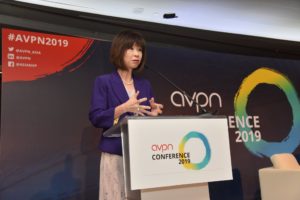
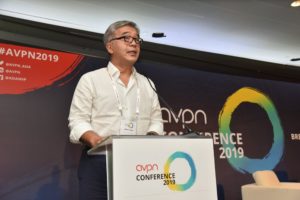


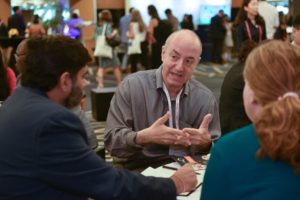
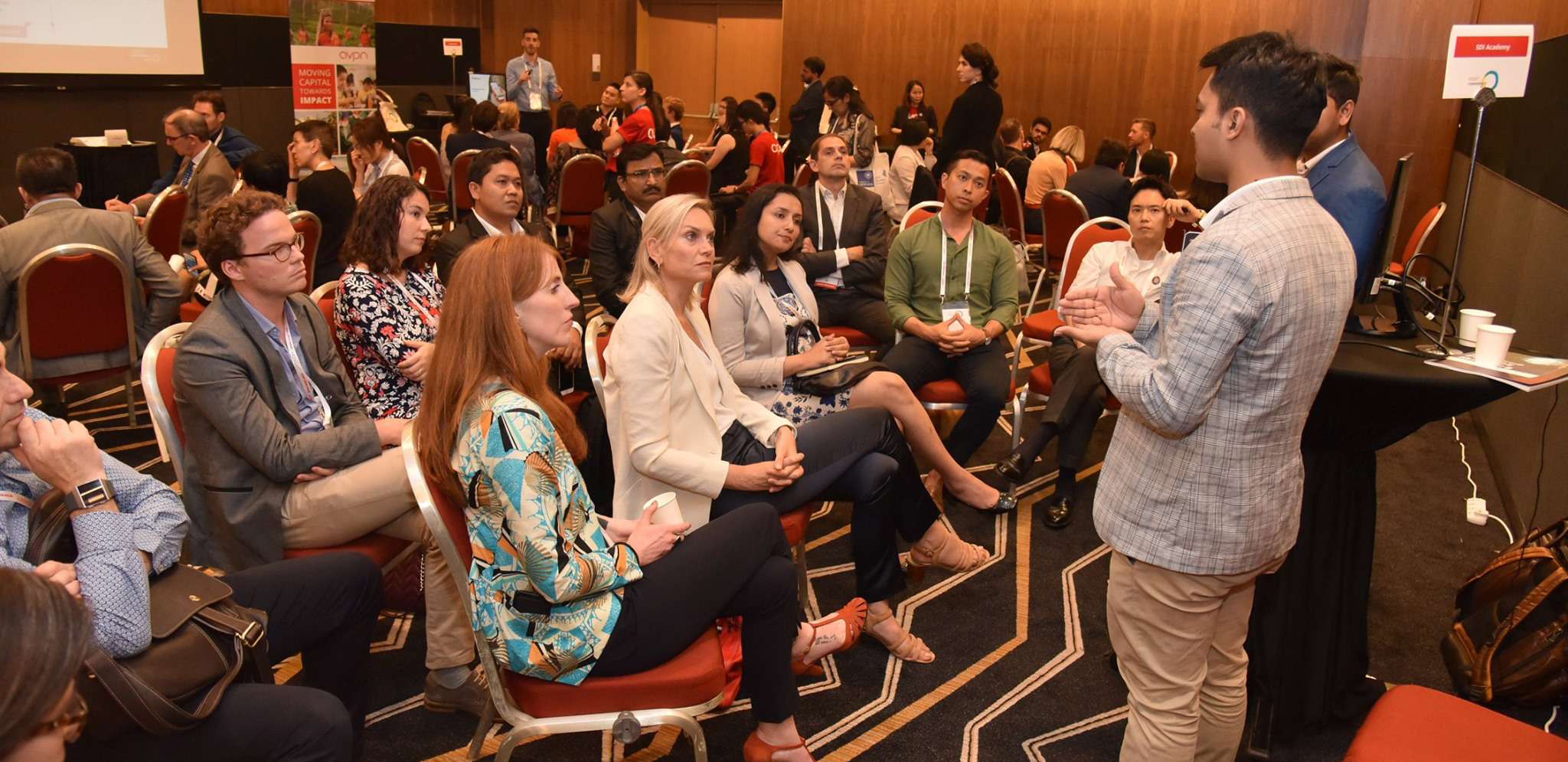

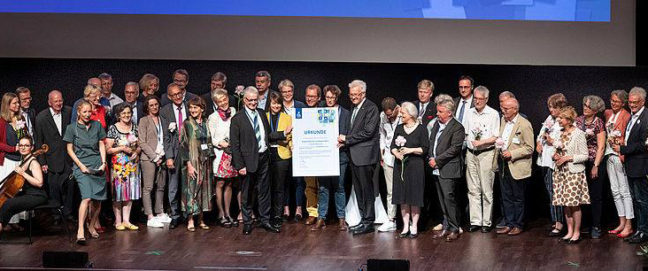

Comments (0)